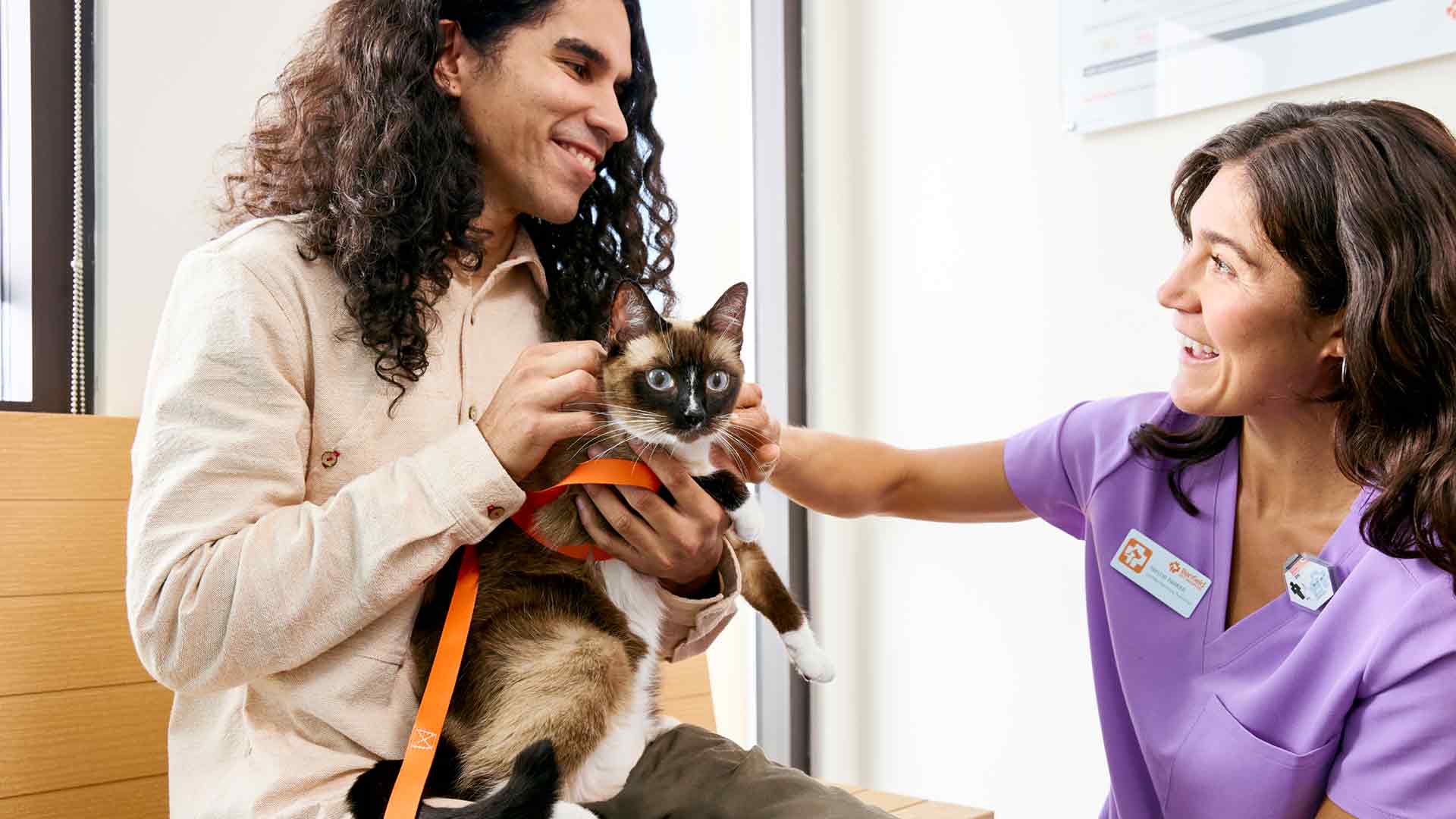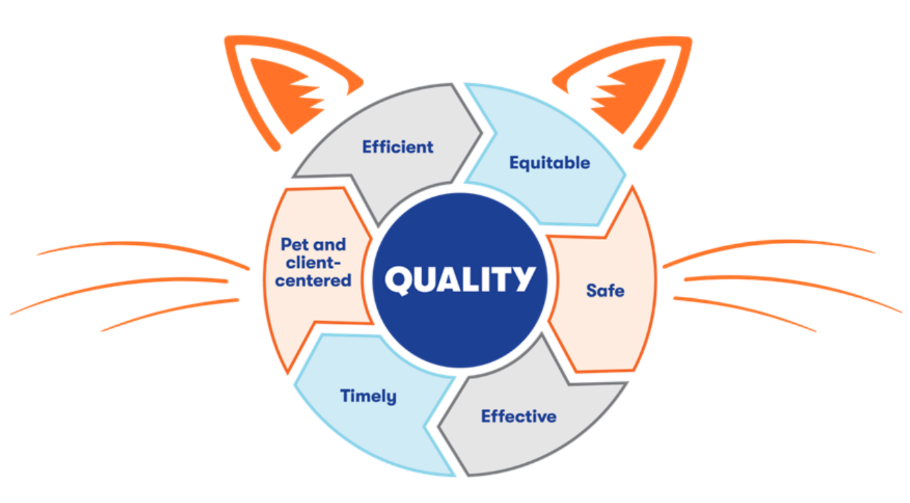Patient-centered care for cats
 Every year, Banfield Pet Hospital hosts Quality Week to celebrate how our nearly 20,000 Associates show up every day to provide quality care to pets. This year's Quality Week is all about cats. Feline patients can be difficult to diagnose because they tend to hide pain, and visiting the hospital is often more stressful for cats, who don’t love leaving the comfort of their home environment.
Every year, Banfield Pet Hospital hosts Quality Week to celebrate how our nearly 20,000 Associates show up every day to provide quality care to pets. This year's Quality Week is all about cats. Feline patients can be difficult to diagnose because they tend to hide pain, and visiting the hospital is often more stressful for cats, who don’t love leaving the comfort of their home environment.
National Take Your Cat to the Vet Day (#Cat2Vet), observed every year on August 22, was initiated to encourage cat owners to seek routine care for their pets despite these challenges. Veterinary medical professionals also have a role in making sure pets receive the care they need. For cats, this can include developing and implementing strategies to reduce stress that may be associated with hospital visits. At Banfield, we are constantly reviewing and improving our protocols when it comes to patient handling, pulling from industry best practices and guidelines.
What this means for veterinary teams
Veterinarians and hospital teams help promote routine care for cats by building strong relationships with pet owners and using a pet- and client-centered approach to reduce stress and respect the needs and preferences of cats and their people.
Frequency of veterinary care for cats
Banfield evaluated trends in dogs and cats seen at Banfield’s network of more than 1,000 hospitals from 2017 to 2022. According to our data, only 18.3% of pets seen at Banfield in 2022 were cats compared to dogs (81.7%). The disparity is even greater when you look at visits: 14.2% of our hospital visits in 2022 were cats compared to 85.8% of visits being dogs.
Focusing on the patient experience
There are a number of tested strategies and techniques hospital teams can implement to help foster calm, low-stress and safe visits for both cats and their people in your hospitals.
In addition to following industry guidelines around appropriate restraint, positive reinforcement, administration of medications, and muzzling, some specific practices for appropriately handling cats include:
- Eliminate any potentially cat-offensive odors
- Use cat friendly pheromones (plug-ins, sprays) for calming
- Allow cats to exit carriers on their own, or remove the tops so that cats may be examined inside the carriers they arrive in
- Consider using other less stressful techniques instead of scruffing or tools to lift cats
Quality care for each patient
These strategies are intended to reduce the potential stress associated with handling and veterinary visits, so that pets – especially cats – are more likely to receive the care they need. Focusing on the patient experience reflects the “pet- and client-centered” domain of quality, part of a holistic framework that portrays the care Banfield aims to provide to every pet, every day. Adapted from the Agency for Healthcare Research and Quality1 and first created by the Institute of Medicine2, this model includes six elements that work together to define quality care. “Pet- and client-centered” describes care that respects and responds to pets’ and clients’ individual needs, as well as clients’ preferences and values.

- Agency for Healthcare Research and Quality: Six Domains of Healthcare Quality. Available at: https://www.ahrq.gov/talkingquality/measures/six-domains.html
- Institute of Medicine. Crossing the Quality Chasm: A New Health System for the 21st Century. Available at: https://pubmed.ncbi.nlm.nih.gov/25057539/
